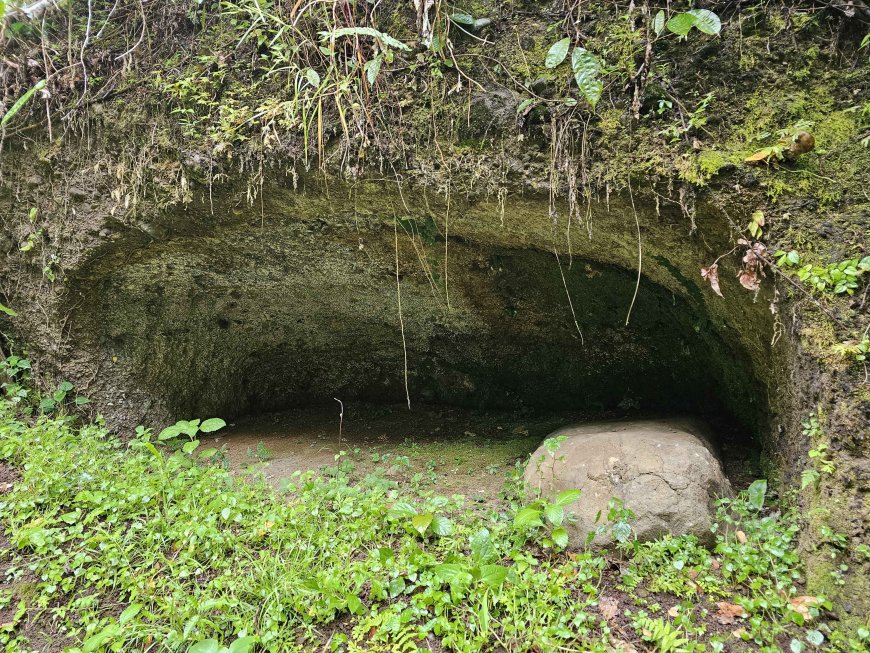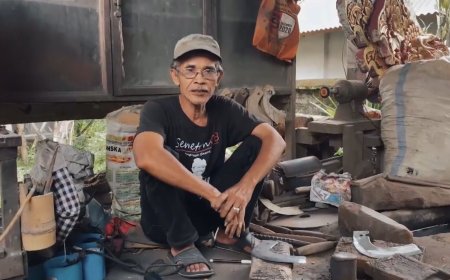Kerobokan Cliff Temple: A Forgotten Historical Building
Kerobokan Cliff Temple is a unique archaeological site in Bali, located in Pejeng Kangin Village, Gianyar Regency. Carved directly into the cliffs of the Pakerisan River, this temple reflects ancient Balinese artistry and spirituality. Estimated to date back to the 12th century, Candi Tebing Kerobokan showcases intricate stone carvings that are deeply connected to Bali’s cultural heritage. Although it remains largely overlooked by tourists, the site offers a unique natural experience that stands apart from more popular Balinese temples.

Kerobokan Cliff Temple is a unique archaeological site located in Pejeng Kangin Village, Tampaksiring District, Gianyar Regency, Bali. Carved directly into the rocky cliffs along the Pakerisan River, this temple holds deep historical and cultural significance from Bali’s ancient past. Despite its beauty and uniqueness, Kerobokan Cliff Temple often goes unnoticed by tourists who are more drawn to popular temples like Gunung Kawi and Tirta Empul.
Estimated to have been built in the 12th century, Kerobokan Cliff Temple showcases exceptional stone carving techniques. Unlike other temples on flat land, this temple is carved into steep cliff faces, requiring remarkable skill and precision from the artisans of the past. The temple structure merges seamlessly with the surrounding nature, appearing as though it is an integral part of the cliff itself. The intricate styles and ornaments throughout the temple reflect a rare, ancient Balinese design.
 Kerobokan Cliff Temple (Photo Source: Personal Collection)
Kerobokan Cliff Temple (Photo Source: Personal Collection)
Accessing Kerobokan Cliff Temple can be challenging. To reach the site, visitors must descend 292 steps and walk through a dense forest. To reach the temple building itself, visitors also have to cross the Pakerisan River and follow a trail overgrown with thick foliage. Although difficult to reach, the isolated setting adds to the site’s allure, offering a hidden treasure nestled in nature.
The purpose of Kerobokan Cliff Temple remains a mystery. Based on existing research, many experts believe the temple served as a spiritual retreat or place for meditation. Its serene surroundings, with lush trees and the sounds of the flowing river, create an atmosphere ideal for meditation or religious rituals. This aligns with the ancient Balinese belief in harmony between nature and spirituality.
 Small Cave Near Temple (Photo Source: Personal Collection)
Small Cave Near Temple (Photo Source: Personal Collection)
Intriguingly, not far from the temple, there is a small cave and a large stone resembling a pillow. Locals believe this area once served as a resting place for a king. Such details add a sense of mystery and historical value, suggesting that Candi Tebing Kerobokan was not just an ordinary temple but perhaps a resting or retreat site for nobles or important figures.
Despite its high historical and cultural value, Kerobokan Cliff Temple is not as well-known compared to other Balinese temples. A lack of information about the temple means it is rarely visited by tourists. For history and architecture enthusiasts, however, this temple offers a unique experience with its natural and simple charm, quite different from Bali's modern attractions.
Conservation efforts for Kerobokan Cliff Temple are crucial to preserving this historical site for future generations. The humid environment and moss covering the temple walls have accelerated stone degradation, which can damage the intricate carvings and structure. Additionally, the overgrown access trail often makes it difficult for visitors to reach the site. This situation can hinder cultural tourism promotion, considering this temple is an essential relic along the Pakerisan River.
 Pakerisan River (Photo Source: Personal Collection)
Pakerisan River (Photo Source: Personal Collection)
Collaboration between the government, local communities, and cultural institutions is key to preserving Kerobokan Cliff Temple. Through combined efforts, the path to the temple can be maintained, and the surrounding area kept in good condition. Actions such as clearing moss and improving access trails can enhance visitor comfort without compromising the site's authenticity. Furthermore, raising public awareness of the temple's historical value can encourage more sustainable preservation. These efforts aim to ensure that future generations can continue to enjoy and learn from the cultural heritage of Kerobokan Cliff Temple. Preserving this site is not only vital for safeguarding the temple itself but also for reinforcing values






























































